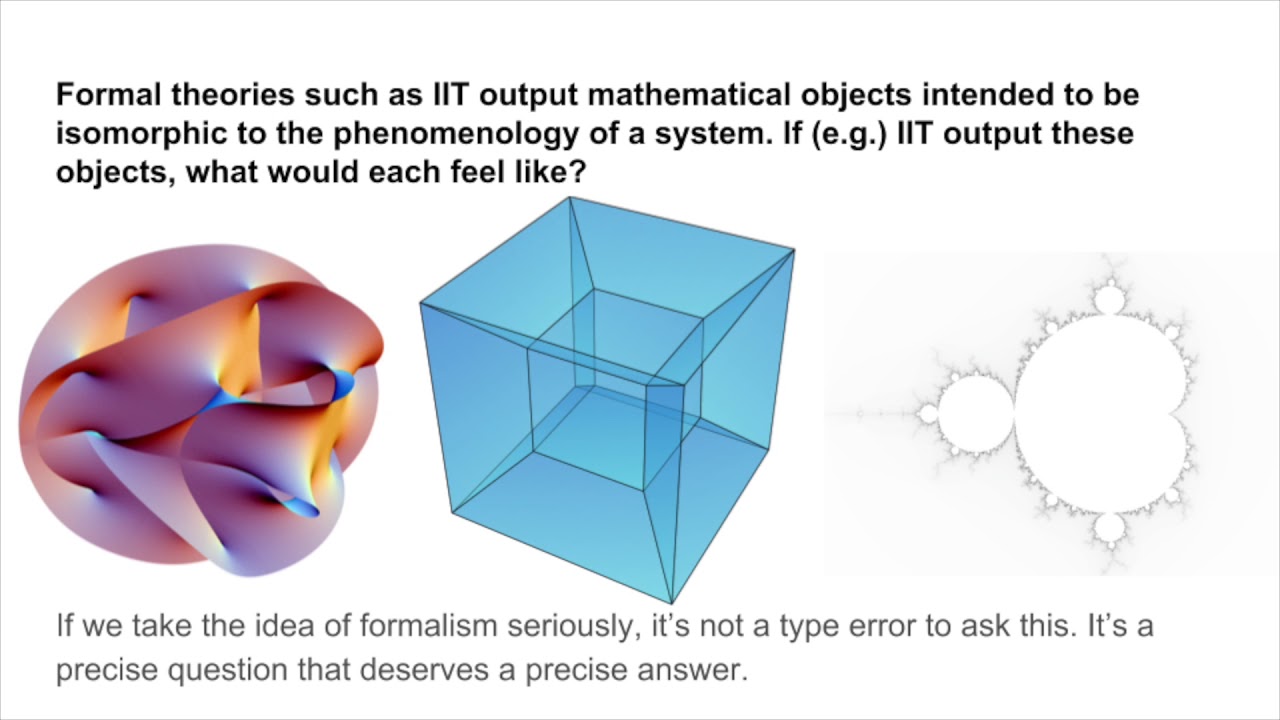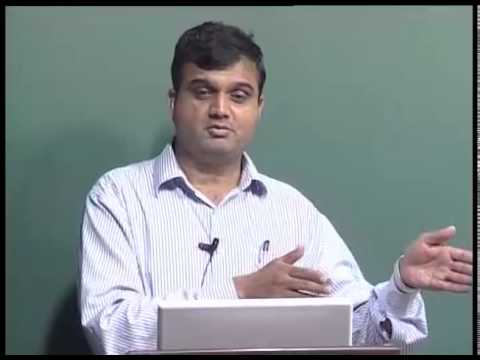Andrés Gómez Emilsson
Talk by Michael E. Johnson from the Qualia Research Institute.
Venue: 2018 Science of Consciousness conference, Tucson, AZ.
Abstract:
IIT, Orch-OR, Perceptronium, and other panpsychist approaches to formalizing consciousness have been gaining traction in recent years (Oizumi, Albantakis & Tononi 2014; Hameroff & Penrose 1996, 2014; Penrose & Hameroff 2011; Tegmark 2014; Barrett 2014). However, relatively little effort has been spent on interpreting the formal output of such theories. We briefly outline the problem, suggest four heuristics for addressing it, and offer the preliminary fruits of these heuristics, the Symmetry Theory of Valence. First, we offer that a theory of consciousness is “formal” insofar as it acts as an objective translation function, wherein one feeds in facts about a system, with the output result being a mathematical object isomorphic to the phenomenology of that system (Oizumi et al. 2014; Tsuchiya, Taguchi & Saigo 2016). As such, we can consider theoretical formality on a continuum, with IIT and Orch-OR on the ‘more formal’ end, and theories such as Global Workspace Theory on the ‘less formal’ end. However, even if progress continues apace and we settle on the correct method by which to objectively derive mathematical objects isomorphic to any system’s qualia, we’ll still be faced with the challenge of interpreting what such a formalism means: which features of this mathematical object correspond to which specific qualia (Balduzzi & Tononi 2009). To address this challenge, we take advantage of the bidirectional nature of the isomorphism and note that distinctions about the mathematical output of (e.g.) IIT or Orch-OR also apply to the qualia it represents and vice-versa; this gives us a framework for combining intuition and formal methods in order to reverse-engineer specific qualia. As a first pass, we offer that a quale (and its mathematical representation) can be (1) local vs global; (2) simple vs complex; (3) atomic vs composite; (4) intuitively important vs intuitively trivial. And so if we can determine that a given quale is e.g. global, simple, atomic, and intuitively important, so too is its mathematical representation, and vice-versa. Based on this analysis, we identify emotional valence, or the ‘hedonic gloss’ of experience (Frijda 2006, 2009; Aldridge & Berridge 2009; Ryle 1954) as a plausible first candidate for reverse-engineering (“the c. elegans of qualia”), and suggest the Symmetry Theory of Valence: given a mathematical object isomorphic to the phenomenology of a system, the property of that object which corresponds with how pleasant it is to be that system will be the object’s symmetry. Lastly, we extend this to empirical predictions and implications for the further development of Orch-OR and IIT.
Source




Elan vital wasn't eliminated at all. This is just a belief that people that don't understand biology have. But people who do understand biology know that we still don't know how molecules know where to go in organisms, so you still need elan vital.
Anyway, the problem of formalism is that you then need to give a formalism for the formalism, because any equation that you might write for red for example, is itself a quale and you need to bring another formalism for that as well. And you go like that to infinity.
I actually proved in my paper, "The Self-Referential Aspect of Consciousness", that self-reference, the entity that lies at the heart of consciousness, is unformalizable:
https://philpapers.org/profile/683334
Great talk Michael! 🙂